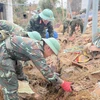The Ministry of Culture, Sports and Tourism last week recognised Tram Chim National Park in the Mekong province of Dong Thap as a national heritage site.
In May 2012, the national park, which is a large sanctuary for birds, was recognised as the fourth Ramsar site in Vietnam and the 2,000th in the world.
The other Ramsar sites in the country are the Xuan Thuy Natural Wetland Reserve in the northern province of Nam Dinh, the Bau Sau (Crocodile Lake) Wetlands and Seasonal Flood Plains in Cat Tien National Park in the southern province of Dong Nai, and Ba Be National Park in the northern province of Bac Kan.
Covering a total area of 7,588ha, Tram Chim National Park is considered a "smaller Dong Thap Muoi (Plain of Reeds)".
With a system of swamps, grass plots and natural canals, the park is an ideal habitat for 191 species of plants, 150 species of freshwater fish and nearly 231 species of water birds. Some of these are listed in Vietnam's Red Book of rare and threatened species.
The Tram Chim National Park was established in 1994 as the first national park in the Mekong Delta, followed by the establishment of Phu Quoc National Park in Kien Giang province in 2001, U Minh Thuong National Park in Kien Giang province in 2002, Ca Mau Cape National Park in 2003 and U Minh Ha National Park in Ca Mau province in 2006.-VNA
See more

Vietnam, UK launch 24.3 million USD initiative to strengthen coastal resilience
An innovative effort for people and nature, COAST is a game-changer for vulnerable coastal communities facing the urgent threats of climate change.
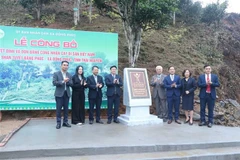
Thai Nguyen: 12 ancient Shan Tuyet tea trees win national heritage status
The recognition honours the biological, cultural and historical values of these centuries-old Shan Tuyet tea trees – natural treasures deeply woven into the livelihoods, traditions and identity of local ethnic communities. The title affirms the community’s commitment to preserving and promoting the value of this iconic local tea variety.
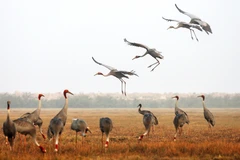
Return of sarus cranes: Hope takes wing in Dong Thap wetland
Beneath the wide Mekong Delta sky, Tram Chim National Park is racing against time, pouring heart and science into a decade-long (2022–2032) plan to rescue the Eastern sarus crane – an elegant, scarlet-headed bird listed as endangered on the International Union for the Conservation of Nature (IUCN) Red List and a living emblem of both the park and all of Dong Thap province

International community ready to support Vietnam in energy transition, climate response
In a video message to the press conference, UN Resident Coordinator in Vietnam Pauline Tamesis said the UN is ready to support Vietnam in building a pipeline of projects capable of absorbing financing mobilised under the Political Declaration on establishing the Just Energy Transition Partnership (JETP), as well as from global climate finance sources, including the Green Climate Fund and the Loss and Damage Fund.
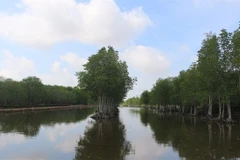
Coastal localities gain better-than-expected results in forest protection
Among these localities, Ca Mau led with 1,879ha of newly planted forest, reaching 93.3% of the target.
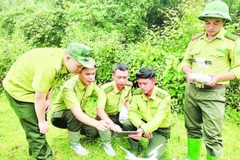
Digital technology application enhances forest management, protection
With a total forest area of over 14 million hectares, including more than 10 million hectares of natural forests, forests exist in all 34 provinces and cities across the country. Given the large area and limited workforce, applying digital solutions in forest management and protection has become a top priority for the forestry sector.

Banking sector accelerates green transition towards net-zero goals
According to the State Bank of Vietnam (SBV), by the end of the third quarter, outstanding green credit reached approximately 742.8 trillion VND (28.17 billion USD), up 5.5% compared to the second quarter and 9.3% from the end of 2024.
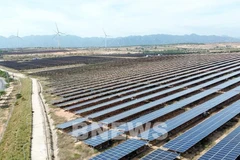
Climate-tech sector sees surge in venture capital investment
According to the CT-FE 2025 report, from 2015 to 2024, a total of 78 climate-tech enterprises in Vietnam raised nearly 205 million USD with 217 deals. In 2024 alone, the raised amount reached almost 100 million USD.
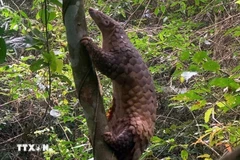
Quang Ngai releases rare pangolin back into nature
Initial verification showed that the animal weighed 3.7kg and measured over 60cm. It was identified as a Sunda pangolin (Manis javanica), also known as the Javan pangolin, listed in Group IB – critically endangered and strictly protected from all commercial exploitation.
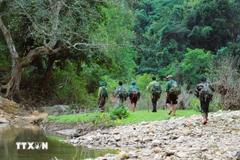
Exploring “miniature world” of Pu Huong Biosphere Reserve
The Pu Huong Nature Reserve is one of the three special-use forests forming the core zone of the Western Nghe An Biosphere Reserve, which was granted the world status by UNESCO in 2007.
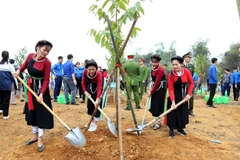
Tree-planting programme exceeds one-billion-tree goal
The total comprises 573.9 million scattered trees and 865.2 million trees grown in concentrated plantations, equivalent to 429,125 hectares of forest. Provinces posting the strongest results include Phu Tho with 177.9 million trees, Lao Cai with 108.8 million, and An Giang with 98.5 million.
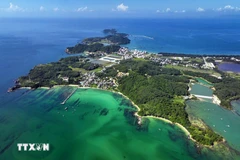
Quang Ninh establishes Co To – Tran Island marine conservation area
Covering a total area of 18,414 hectares, the conservation area includes 13,230 hectares of functional zones (strictly protected zone, ecological restoration zone, and service-administration zone) and 5,184 hectares of buffer zone.
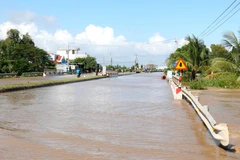
Lam Dong: Severe flooding causes major disruptions, National Highway 1A temporarily closed
Preliminary reports from local authorities indicated that around 1,705 homes had been inundated as of late afternoon, with floodwaters continuing to rise. Over 1,000 households, severely affected by deep flooding, were urgently evacuated to safe places.
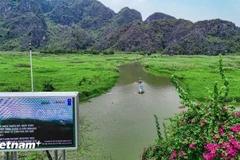
Vietnam pledges to join hands for greener, sustainable, prosperous ASEAN
The bloc now recognises 69 ASEAN Heritage Parks (AHPs), including 15 in Vietnam. These parks have played a key role in implementing the Kunming–Montreal Global Biodiversity Framework and ASEAN’s Biodiversity Action Plan.
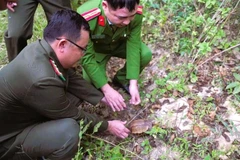
Nghe An: Endangered Indochinese box turtle released back into nature
The Indochinese box turtle is listed in the Vietnam Red Data Book and classified as critically endangered in the International Union for the Conservation of Nature (IUCN) Red List.
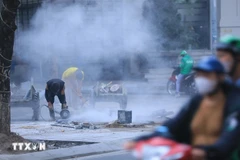
Hanoi takes urgent measures to curb air pollution
The city requires the enhanced application of advanced technologies and remote monitoring systems, including satellite remote sensing, drones, and AI-integrated traffic cameras, to monitor, detect, and strictly address the illegal burning of garbage, straw, and agricultural by-products.
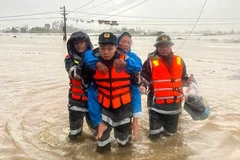
Vietnam among countries hit hardest by monsoon rains: WMO
Devastating rainfall has triggered catastrophic flooding in parts of South and Southeast Asia, claiming hundreds of lives, displacing entire communities and causing massive economic disruption.
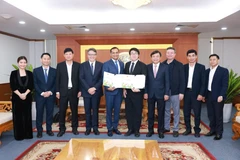
International cooperation to promote sustainable growth and realize Net Zero goals in Vietnam
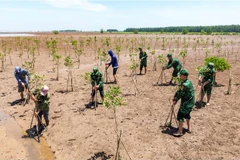
Climate response policies of Vietnam: A firm commitment to a green future
Climate change has become one of the most pressing challenges of the 21st century, directly threatening food security, water resources, socio-economic stability and even the survival of many nations.
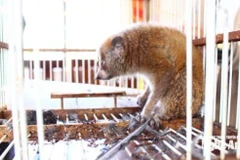
Rare wild animals released into the wild in Nghe An
A pygmy slow loris has been handed over to authorities by a resident of Con Say hamlet, Quynh Anh commune, who had found the animal while working in the fields.






